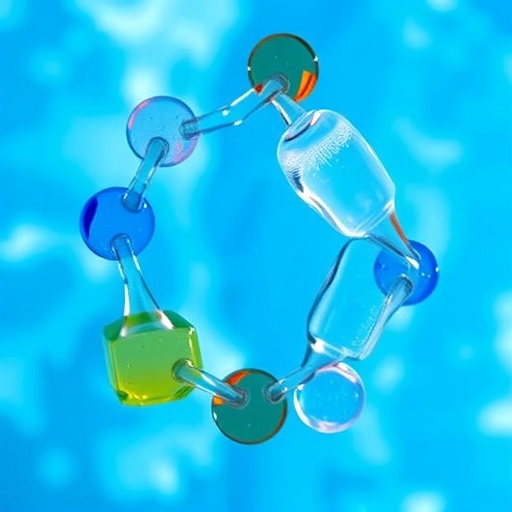In the ever-evolving dialogue surrounding environmental conservation, a groundbreaking review sheds light on the pervasive effects of plastic compounds on arthropod populations. Conducted by esteemed researchers Aviles and Siaussat, this study emphasizes the pressing need for interdisciplinary approaches to combat the ecological ramifications of plastic pollution. As environmental scientists, ecologists, and policymakers grapple with the wide-reaching consequences of synthetic materials, this review serves as a clarion call to synergize research efforts across various disciplines.
For decades, modern society has relied heavily on plastics, positioning these materials as indispensable to countless industries. Unfortunately, this convenience comes at a critical cost. The accumulation of plastics in terrestrial and aquatic ecosystems presents multifaceted challenges that extend far beyond mere aesthetics. By focusing on two major plastic compounds — microplastics and bisphenol A (BPA) — the authors delve into their intricate interactions with arthropod populations, revealing a stark narrative of decline and disruption that demands urgent attention.
Arthropods, which include insects, arachnids, and crustaceans, are not merely the backdrop of ecological interactions; they are pivotal players in maintaining environmental balance. These organisms serve essential functions, from pollination to decomposition, thereby sustaining the intricate web of life on Earth. The review outlines how exposure to plastic particles and chemical leachates can disrupt vital biological processes in arthropods, leading to detrimental outcomes not only for these species but also for the ecosystems they underpin.
One of the primary concerns raised in this review is the physiological impact of plastic-derived pollutants on arthropods. Research indicates that microplastics can be ingested by various arthropod species, resulting in significant internal damage and altered behavior. The ingestion of these particles can lead to reduced feeding efficiency, impaired reproduction, and increased mortality rates. These physiological stressors highlight the need for policymakers to address not just the visible presence of plastic waste, but also its invisible presence at the micro level.
In addition to microplastics, BPA—a chemical commonly found in the manufacturing of polycarbonate plastics—has emerged as a significant threat to arthropod populations. The review meticulously details how BPA exposure disrupts hormonal pathways in these organisms, leading to reproductive and developmental anomalies. Such findings raise critical questions about the long-term implications of synthetic compounds on biodiversity and ecosystem health.
Moreover, the research emphasizes the intricate relationship between arthropods and their environments. With arthropods playing crucial roles in nutrient cycling and pollination, their decline could precipitate wide-reaching consequences for entire ecosystems. For instance, the decline of pollinators, many of which are arthropods, could significantly impact plant reproduction, leading to reduced agricultural yields and diminished biodiversity. Furthermore, such outcomes could reverberate through food webs, affecting species both above and below arthropods in the ecological hierarchy.
To combat these pressing issues, the authors petition for increased interdisciplinarity in ecological research. By engaging experts across biology, chemistry, environmental science, and policy development, the scientific community can cultivate a more holistic understanding of how plastic pollution interacts with biological systems. Such a multidisciplinary approach is critical for devising effective management strategies aimed at mitigating the effects of plastic pollution on arthropod populations.
Though the challenges posed by plastic pollution may seem daunting, there is a silver lining. This review not only underscores the urgent need for action but also highlights the potential for positive change. By fostering partnerships among researchers, conservation groups, and industry stakeholders, society has the opportunity to innovate sustainable solutions that will help protect not only arthropods but the myriad life forms that depend on them.
In conclusion, the review serves as an impetus for increased awareness and action in tackling the multifaceted crises associated with plastic pollution. Aviles and Siaussat elucidate the complex interactions between plastic compounds and arthropod populations, presenting a strong case for the vital need for further research at the population level. By shining a light on these urgent issues, the authors provide a call to arms for the scientific community, urging collective efforts to preserve the delicate balance of our ecosystems and ensure a future where both arthropods and humanity can thrive.
Strengthening the environmental narrative requires that researchers, governments, and industries coalesce around evidence-based practices to curtail the influx of plastics into natural habitats. It is essential that we not only address the immediate threats posed by plastic pollution but also create a sustainable future where such materials are thoughtfully managed. The time for action is now; the continued health of arthropods and ecosystems depends upon our willingness to heed this call.
The implications of this review reach far beyond academia. By translating scientific findings into tangible policy initiatives, it becomes possible to enact real change. This review acts as a reminder that every individual has a role to play. Whether through advocacy, education, or lifestyle adjustments, the fight against plastic pollution can only be won through a collective effort that informs and inspires.
The necessity for research at the population level cannot be overstated. Understanding the broader ecological impacts of plastic compounds on arthropods and their interactions with the environment is crucial for informed decision-making. As our understanding evolves, so too must our approaches to conservation and sustainability.
Together, we have the potential to forge pathways for a future less burdened by the weight of synthetic materials. This review not only highlights the seriousness of the current environmental crisis but also instills a sense of hope that through collaborative action and rigorous research, we can pave the way toward improving the ecological health of our planet.
Subject of Research: The effects of plastic compounds on arthropods.
Article Title: Review of the effects of two major plastic compounds in arthropods: a call for increased interdisciplinarity and further studies at the population level.
Article References:
Aviles, A., Siaussat, D. Review of the effects of two major plastic compounds in arthropods: a call for increased interdisciplinarity and further studies at the population level.
Environ Sci Pollut Res (2025). https://doi.org/10.1007/s11356-025-36773-x
Image Credits: AI Generated
DOI:
Keywords: Plastic pollution, arthropods, microplastics, bisphenol A, interdisciplinary research, ecosystem health, environmental management.




